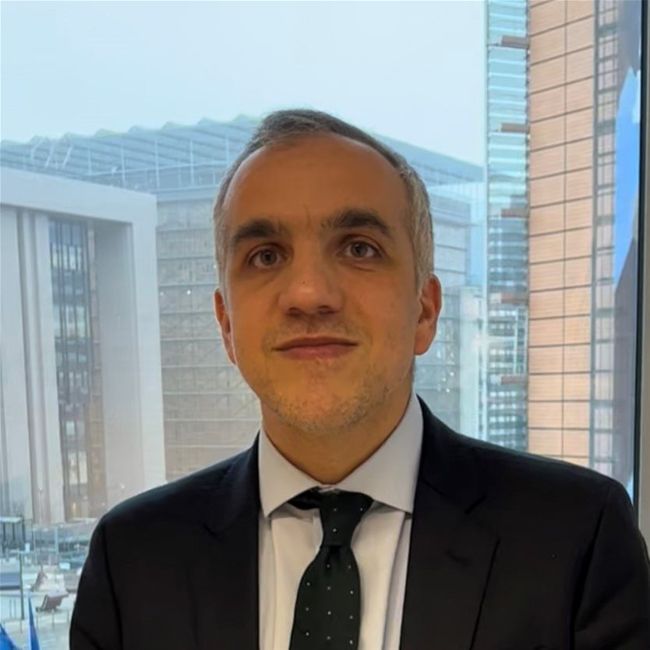The right questions to ask about the future of cohesion policy

Francesco Molica, Director for Regional Policy, CPMR
It may appear premature to discuss the future of cohesion policy at this early stage of a programming period. New programmes are not even up and running, after all. Yet the extraordinary challenges faced by the continent in the past two years have elicited a response from the EU with far-reaching ramifications. The NextGenerationEU recovery instrument has heralded a paradigm shift in many respects.
Plans to overhaul the EU’s economic governance and to accelerate the green transition, amid growing climatic and geopolitical instability, are expected to have a major influence on the post-2027 budgetary framework. An overall rethinking of EU investment policies is a likely scenario.
Bearing this in mind, it is important to launch as early as possible a reflection on how cohesion policy could fit in a reformed EU budget galaxy. Equally essential is to assess whether or not its current shape will still be fit for purpose in, say, a decade, looking at the evolving picture of territorial disparities provided by the 8th cohesion report.
What would be the best way to approach the discussion on the future? Probably we should begin by identifying the right questions. The first that springs to mind is how to ensure more synergies and prevent fragmentation across the various funds. The number of instruments contributing directly or indirectly to cohesion goals has been growing under the Multiannual Financial Framework for the period 2021-2027. Adding to the five existing structural funds, the EU has set up the Just Transition Fund, the Recovery and Resilience Facility (RRF), the Brexit Adjustment Reserve and the Social Climate Fund (this last is still to be adopted).
The first question that springs to mind is how to ensure more synergies and prevent fragmentation across the various funds
Despite strong thematic commonalities, these funds are governed by different legal and strategic frameworks. This makes coordination very hard, creating massive administrative complexities, to the detriment of their overall impact. Many regional authorities, which are the primary agents of implementation, fret about lacking the capacity to cope with this plethora of instruments. The same concern is being heard at national level. Going forward, one way to tackle the problem could be a single investment policy under common rules. This proposal would be far from novel. It would require resuming the path charted in 2014–2020 and going further along it.
But would it be a viable option in the framework of the post-2027 budget? Would it muster enough support from across the 27 Member States? That would depend on many factors, including if the aforementioned new instruments are turned into permanent ones, an option that seems likely. However, even if they are all discontinued, the Commission has hinted that it will consider mainstreaming at least certain aspects of the RRF into other EU programmes. Which aspects? This is another question that should feature prominently in the debate on the future. For instance, it should be assessed if ‘performance budgeting’ – one key feature of the RRF – can be applied to cohesion policy so as to achieve further simplification. The way the RRF is closely wedded to the European Semester can also provide a blueprint for reforming the elusive link between cohesion programmes and the EU’s economic governance
Central question is if cohesion policy should incorporate an emergency response feature on a permanent basis in the future
At the same time, one should tread cautiously with taking the RRF as a reference. The eighth cohesion report indicates that more tailored approaches and bottom-up policymaking are needed within future cohesion policy to tackle territorial divides. This is also key to addressing the so-called geography of discontent. In this respect the RRF, with its centralised governance and spatially blind intervention logic, looks far from optimal.
Finally, another key matter for reflection concerns the role of cohesion policy in the face of unforeseen negative shocks. ERDF and ESF resources have been used in great quantities to mitigate the effects of the pandemic, and recently the Ukrainian refugee crisis. But this has come at the cost of departing from defining features of cohesion policy such as the territorial earmarking and focus, the partnership principle and thematic concentration. Ultimately this course clashes with the long-term investment nature of cohesion policy. Central questions are if cohesion policy should incorporate an emergency response feature on a permanent basis in the future and if this can be done without harming its very rationale and principles.
There are many more aspects that will yet emerge as the debate unfolds. Looking at past negotiations, it cannot be ruled out that cohesion policy may be under threat of being relegated to a less important role in the future. This scenario would mean a smaller budget, perhaps a restricted geographical or thematic focus. It can be avoided only by taking a constructive rather than a conservative approach in the discussion, which means not being afraid of bringing novel ideas to the table and even breaking taboos. That pretty sums up the task ahead.